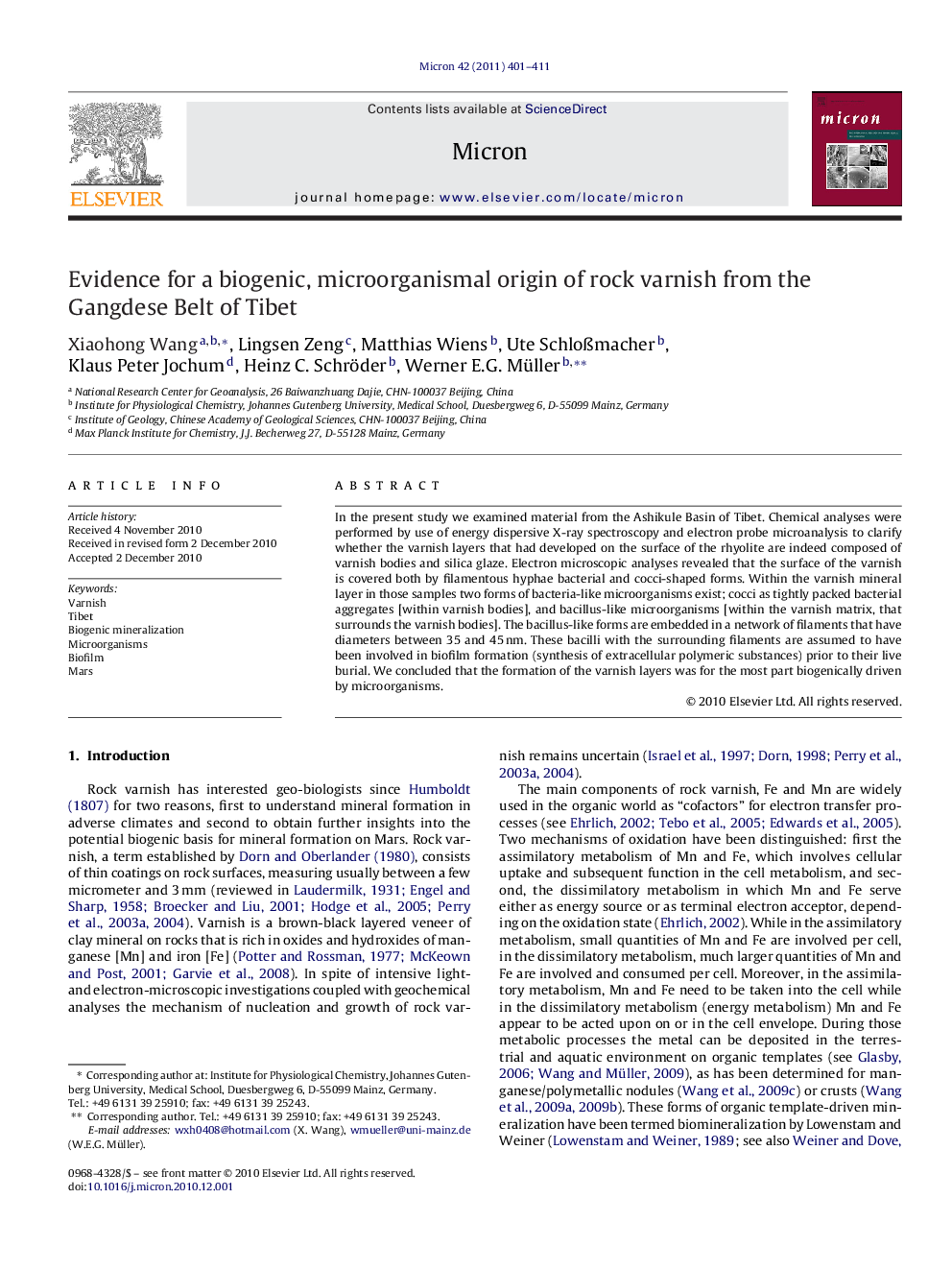| Article ID | Journal | Published Year | Pages | File Type |
|---|---|---|---|---|
| 10652225 | Micron | 2011 | 11 Pages |
Abstract
In the present study we examined material from the Ashikule Basin of Tibet. Chemical analyses were performed by use of energy dispersive X-ray spectroscopy and electron probe microanalysis to clarify whether the varnish layers that had developed on the surface of the rhyolite are indeed composed of varnish bodies and silica glaze. Electron microscopic analyses revealed that the surface of the varnish is covered both by filamentous hyphae bacterial and cocci-shaped forms. Within the varnish mineral layer in those samples two forms of bacteria-like microorganisms exist; cocci as tightly packed bacterial aggregates [within varnish bodies], and bacillus-like microorganisms [within the varnish matrix, that surrounds the varnish bodies]. The bacillus-like forms are embedded in a network of filaments that have diameters between 35 and 45Â nm. These bacilli with the surrounding filaments are assumed to have been involved in biofilm formation (synthesis of extracellular polymeric substances) prior to their live burial. We concluded that the formation of the varnish layers was for the most part biogenically driven by microorganisms.
Related Topics
Physical Sciences and Engineering
Materials Science
Materials Science (General)
Authors
Xiaohong Wang, Lingsen Zeng, Matthias Wiens, Ute SchloÃmacher, Klaus Peter Jochum, Heinz C. Schröder, Werner E.G. Müller,
